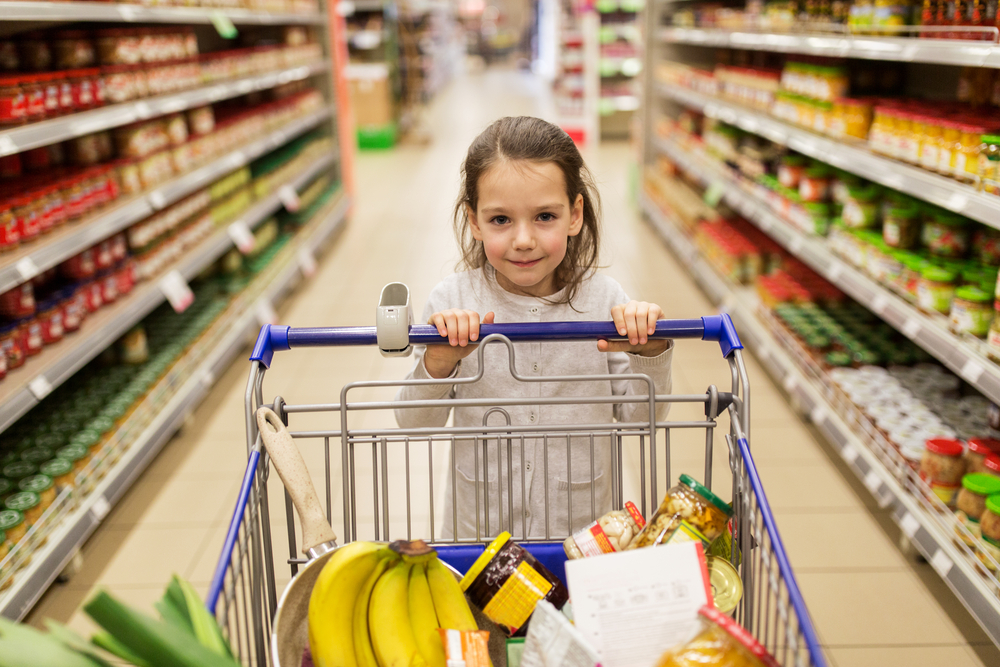
Food manufacturers know your time at the grocery store is limited, so they want to get your attention—quickly! That's why the front of food packages is such valuable real estate, where an impressive-sounding claim may make us grab one package over the other. That's especially true when we're choosing foods for our kids and want the best option possible.
But some of these front-of-package claims should be taken with a serious grain of salt. Though they're all technically true, they often make the products seem better and more wholesome than they actually are. Here are six prime offenders to watch out for:
1. High Protein
Protein is a hot nutrient right now—and from the looks of food packages, you'd think we're all walking around with severe protein deficiencies. It's true that including protein in meals and snacks is helpful for keeping us satisfied, but the reality is that most people eat more than enough. Even if your child doesn't eat meat, he's still getting protein from grains like pasta, dairy like milk and cheese, and even vegetables. So watch out for packaged foods like frozen pizza touting their protein content. They may contain some protein, but they also likely have plenty of sodium and artificial ingredients.
2. 100% Vitamin C
I see this claim a lot on sugary drinks like fruit drinks and brightly-colored punches. It's an impressive-sounding claim: the whole day's worth of vitamin C in one glass! But vitamin C isn't actually very hard to get from real food at all. For example, kids ages 4-8 can get their entire day's supply with about three medium strawberries. And it goes without saying, but kids are much better off getting vitamin C from regular food than a sugary drink.
3. Made With Whole Grain
I'm all for whole grains, which have more fiber, protein, and vitamins than refined grains. And a lot of parents are trying to get more whole grains into their child's meals and snacks. But keep in mind that a product can still claim "made with whole grain" even if the majority of the grains are refined—and a sugary cereal that's "made with whole grains" is still a sugary cereal. If you're really looking for a truly whole-grain product like bread or boxed cereal, look for "whole" in the first ingredient.
4. Reduced Sugar
Many parents (including myself) are looking for ways to keep added sugar in check, so a "reduced sugar" claim can really seem appealing. But before you toss something into your cart, flip over the package to the ingredient list. Instead of simply reducing the sweetness in a product, some companies cut the sugar but add artificial sweeteners to make up the difference. I've spotted this in foods like dried cranberries and even ketchup! Sometimes it's clear from the front of the package that they've done this—but other times, you have to be a label sleuth. Look for ingredients like sucralose, aspartame, and acesulfame potassium, and steer clear if you want to avoid faux sweeteners.
5. All Natural
Though this sounds great, it actually doesn't mean much. According to the FDA, which doesn't have a formal definition of "natural," a product can claim it's natural if it doesn't contain any artificial flavors, added color, or synthetic substances. That's why you may see the claim on foods like potato chips. Though I think it's always good to avoid artificial ingredients when possible, don't be fooled into thinking the product is especially wholesome because it bears this label.
6. Made With Real Fruit
You'll spot this claim on packaged foods like gummy fruit snacks. There may even be pictures of fruit on the package. But check the ingredient list. If the only sign of fruit is "fruit juice concentrate," don't be impressed. That's essentially a form of added sugar—and your child won't be getting the health benefits of eating real fruit.
Sally Kuzemchak, MS, RD, is a registered dietitian, educator, and mom of two who blogs at Real Mom Nutrition. She is the author ofThe Snacktivist's Handbook: How to Change the Junk Food Snack Culture at School, in Sports, and at Camp—and Raise Healthier Snackers at Home. She also collaborated with Cooking Light on Dinnertime Survival Guide, a cookbook for busy families. You can follow her on Facebook, Twitter, Pinterest, and Instagram. In her spare time, she loads and unloads the dishwasher. Then loads it again.
